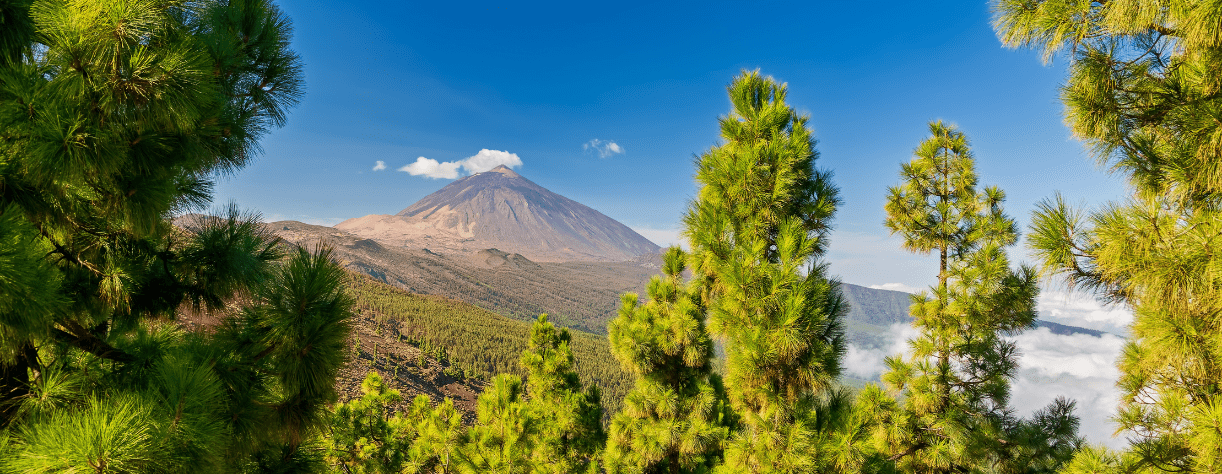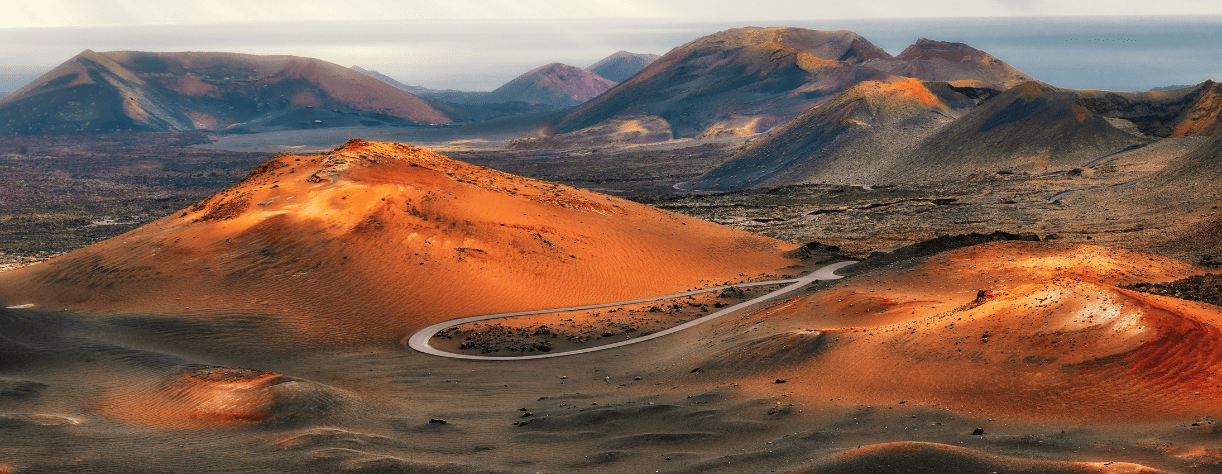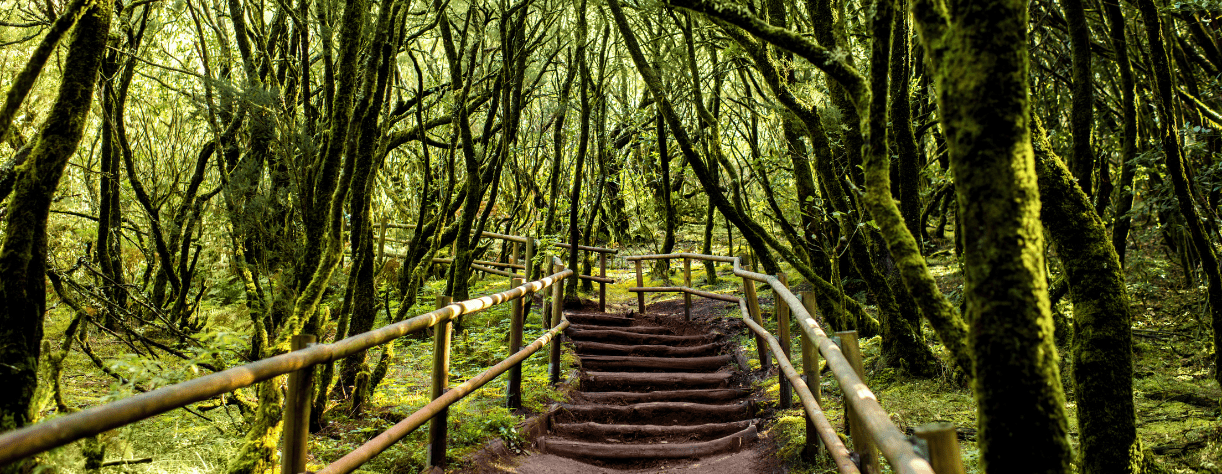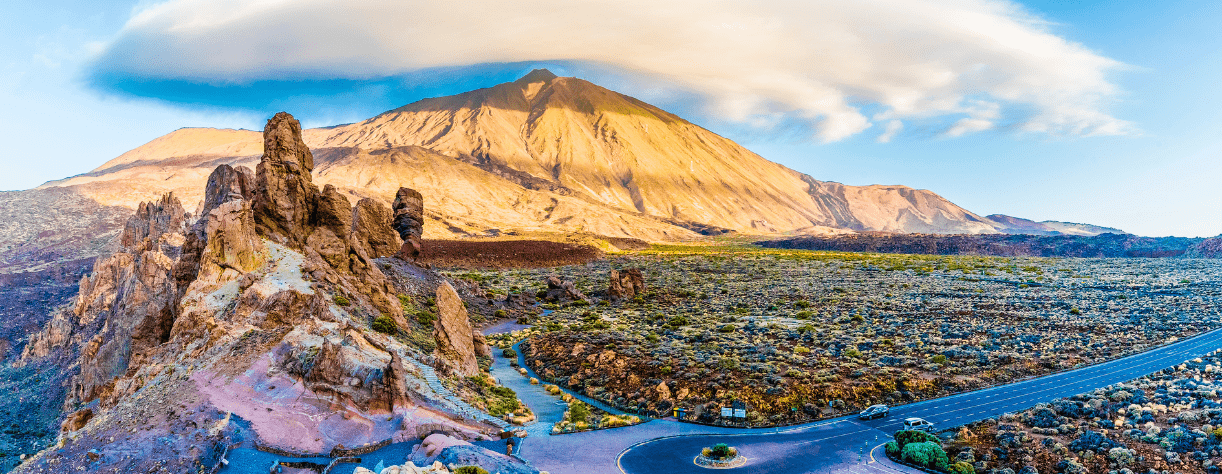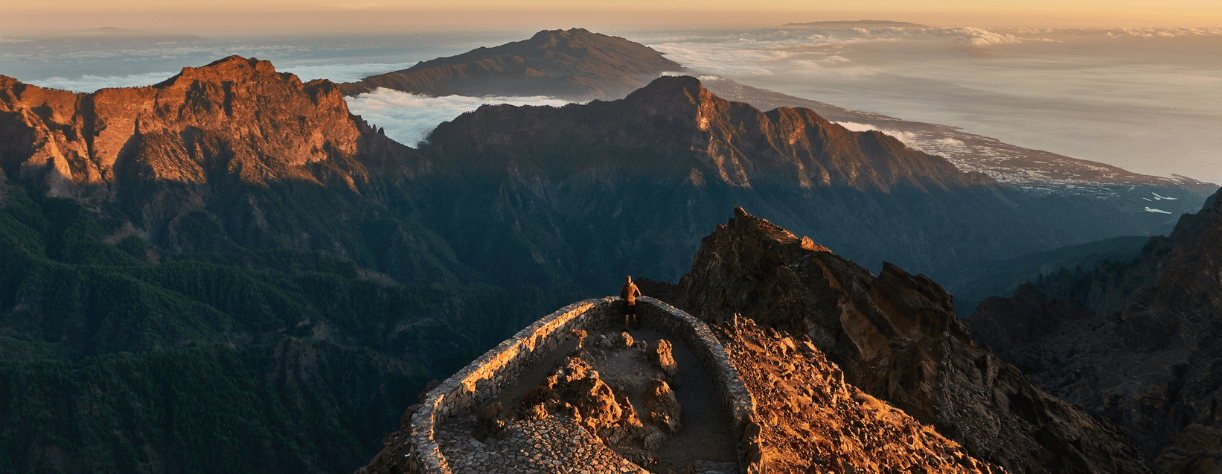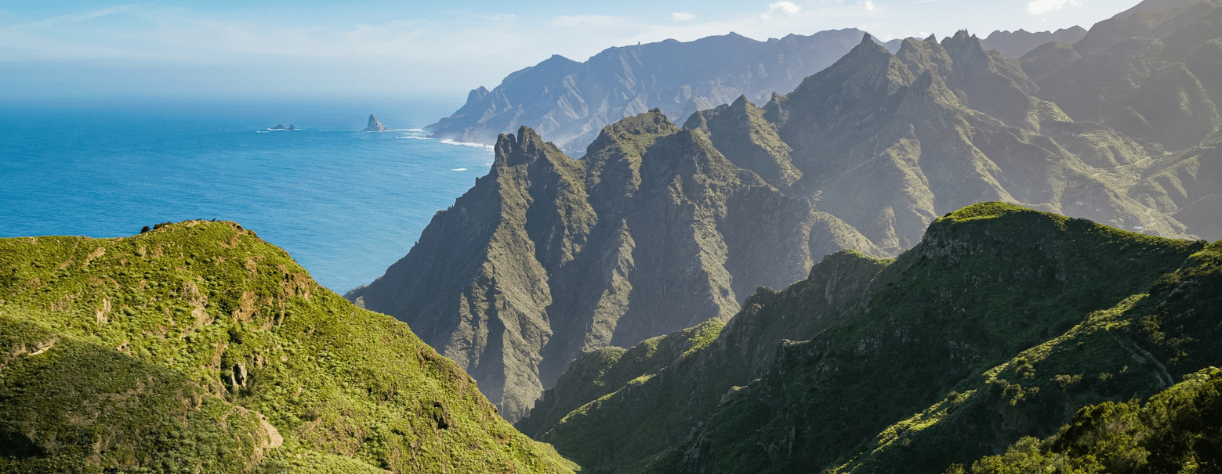Picture yourself hiking the volcanic landscapes of Lanzarote, breathing in the fresh air in the forests of La Gomera and marvelling at Tenerife’s rugged peaks. Whether you’re a seasoned traveller or a first-time cruiser, magic can be found on a Canaries cruise.
In this article, we’ll explore the four stunning national parks of the Canary Islands. From dramatic lava fields to lush green valleys, each offers its own natural beauty and unique experience.
If you want to discover how our small-ship cruises offer a more intimate and immersive experience, embark on one of our 2025 cruises to explore the Canaries like never before.
Canary Islands’ National Parks:
- Timanfaya National Park, Lanzarote
- Garajonay National Park, La Gomera
- Teide National Park, Tenerife
- Caldera de Taburiente National Park, La Palma
- Rural Park of Anaga, Tenerife
Timanfaya National Park, Lanzarote
Born from volcanic eruptions in the 18th century, you’d be mistaken for thinking Timanfaya National Park was Mars if it wasn’t for the bright blue sky sweeping above. This otherworldly destination is a must-see for geology enthusiasts, covering over 50 square kilometres of the island of Lanzarote’s southwest coast.
Top tip for visiting: Check out El Diablo, a restaurant in the national park where the food is cooked using geothermal heat from the volcano!
One of the most popular sites here is Islote de Hilario – where you can see just how much heat is stored under the ground. A man-made geyser is created as water is poured into a pipe and quickly erupts as steam. Be aware that you’ll need to visit on an arranged tour, as the park takes preservation very seriously.
We got in touch with Vincent from Vincent.Voyage, who visited the park, and he told us: “Timanfaya National Park is a must-see for several reasons. The main one is because this is such a beautiful place, out of time. It only happened 300 years ago, and when we visit this place, we feel like travelling to the past. This is a unique place with dozens of craters like nowhere else. Also, accessing Timanfaya is very monitored - this is impossible to visit without guides - so this is a very well-preserved place with a limited number of visitors per day.”
Garajonay National Park, La Gomera
Known for its unique lush laurel forest and flora and fauna, Parque Nacional de Garajonay on the island of La Gomera has rightly earned its place as a nature lover’s dream. It is also on the UNESCO World Heritage list due to it being an example of a relict ecosystem - an old rainforest that is very rare on modern Earth. UNESCO explains its rarity: "It is extraordinary that such a forest still exists at this latitude and proximity to the coasts of the Sahara.”
Great for wildlife spotting: As well as endemic flora, there is plenty of local wildlife to try and see, including the laurel pigeon, La Gomera’s symbolic animal.
The mythical landscapes here are something out of a fantasy film, with mist commonly settling over the scenery to add an air of magic to this enchanting forest. If you’re a keen hiker, you’ll be pleased to know that there are plenty of great paths to follow, so whether you want a simpler stroll or a more challenging route, you’ll find it here.
We spoke to Annika from Finally Lost, who hiked Garajonay National Park during their visit to La Gomera. She told us: “If there’s one thing you shouldn’t miss while visiting La Gomera, it’s Garajonay National Park. It feels like stepping into a fairytale with unpolluted air and promises a great hike. The fog is often present here but that just makes this place even more magical. Make sure to check out their centre and buy some gofio-cookies to take with you on your hike.”
We also got in touch with Heather Cowper of heatheronhertravels.com, who told us why she’d recommend Garajonay National Park: “The Garajonay National Park offers a chance to experience La Gomera's famous laurel forests, which are often shrouded in mist. This was a sacred place for the island's original Guanche people, and the Laguna Grande Visitor Centre is a good place to start, with numerous easy trails allowing you to explore this unique landscape.”
Teide National Park, Tenerife
Dominated by Mount Teide, Spain’s highest point, Teide National Park is one of the world’s premier stargazing and hiking destinations. Both UNESCO and NASA rank Teide as the world’s third-tallest volcanic structure, towering 3,715 metres above sea level. As well as being a national park and UNESCO World Heritage Site, Teide National Park is one of the 12 Treasures of Spain, a voted-for list of Spain’s most popular monuments.
Why not try: For those who prefer a more leisurely day when in port, skip the hiking and take the cable car for breathtaking views with ease.
Local mythology states that Mount Teide was the domain of Guayota, a wicked being and the king of evil genies, represented by a black dog. According to legend, Guayota kidnapped the sun and shut it inside Teide, plunging the world into darkness.
We spoke to Fay Doyle from This Expansive Adventure, a blog focused on travel, adventure and hiking guides. She told us: “Teide National Park is a must-visit for anyone to Tenerife. Whilst many people focus on the stunning beaches, they’re often unaware of the fascinating, high-altitude volcanic landscape that lies ahead of them with a short journey inland. Even if you’re short on time, a visit on the cable car to the top of Teide itself is a must-do. There are also plenty of short hikes in the area that are utterly jaw-dropping.”
Caldera de Taburiente National Park, La Palma
Another paradise for hikers, Caldera de Taburiente National Park on the island of La Palma, is a dramatic and rugged landscape. Located in the centre of the island, Caldera de Taburiente covers nearly 47 square kilometres and encompasses freshwater springs, pine forests and impressive peaks.
The water here encourages lush vegetation within the lower parts of the park, with many comparing these areas to oases. And rewarding viewpoints are available for those who embrace the often challenging hikes.
Rural Park of Anaga, Tenerife
Although not a national park, we couldn’t resist mentioning the Rural Park of Anaga. The park is known for its picture-perfect hamlets and ancient forests and lets you explore the island’s lesser-known size. As it’s not a national park, many people overlook it, but this is a mistake for those who want to enjoy the island’s nature.
The northern stretch of the coastline is dotted with exceptional beaches, many of which have impressive volcanic black sand. Although swimming is not recommended here due to the rough sea, the beaches are perfect for sunbathing.
FAQs about Canary Island’s National Parks
How many national parks are there in the Canary Islands?
There are four national parks in the Canary Islands: Timanfaya National Park, Lanzarote; Garajonay National Park, La Gomera; Teide National Park, Tenerife and Caldera de Taburiente National Park, La Palma.
What is the most visited national park in the Canary Islands?
Teide National Park in Tenerife is the most visited in the Canary Islands and the whole of Spain. It’s estimated to attract over four million visitors a year.
Are any Canary Islands national parks also UNESCO World Heritage Sites?
Yes – two of the national parks in the Canary Islands are UNESCO World Heritage Sites. Garajonay National Park in La Gomera was inscribed in 1986, and Teide National Park in Tenerife was designated in 2007.
The Canary Islands' national parks are breathtaking, from volcanic wonders to lush forests found nowhere else in the world. Whether visiting on a dedicated cruise or stopping by on a longer cruise to the Caribbean, these unique islands are sure to impress.


